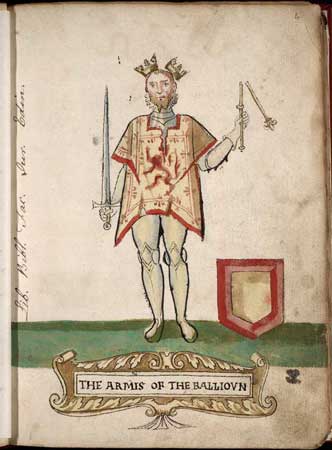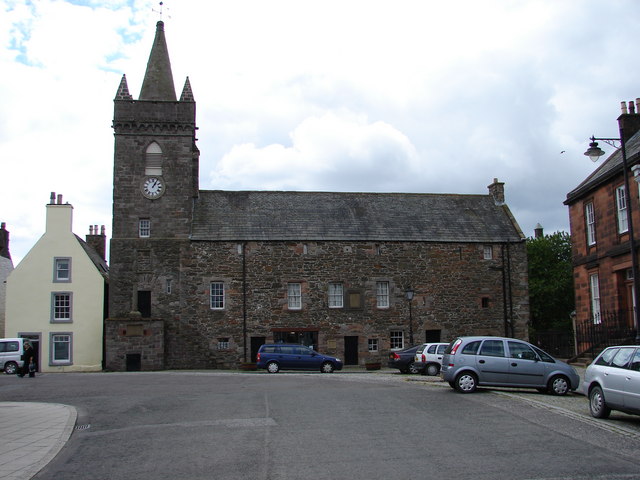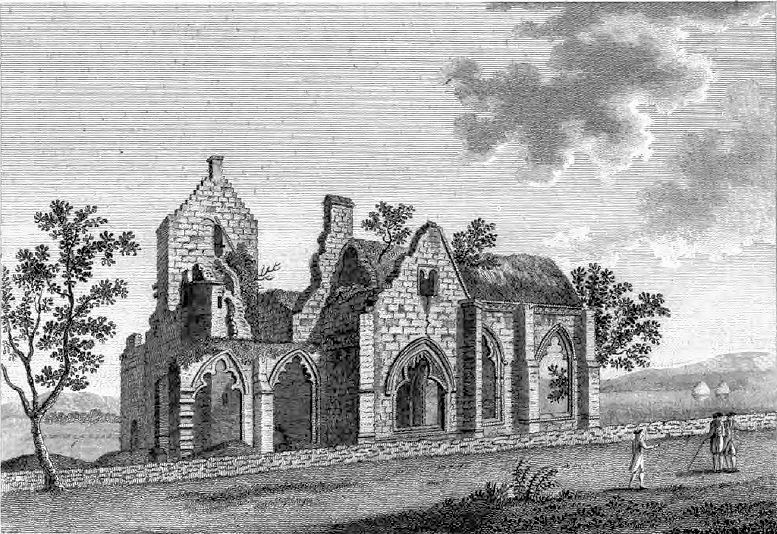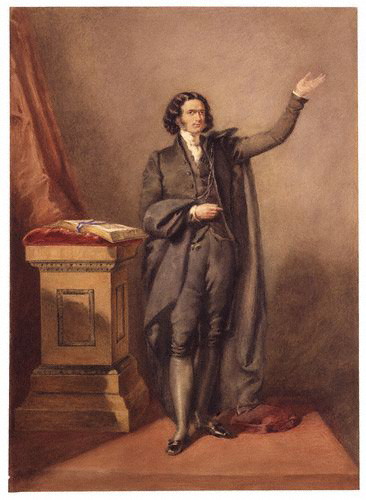|
English Invasion Of Scotland (1300)
The English invasion of Scotland of 1300 was a military campaign undertaken by Edward I of England to continue gains from the English invasion of Scotland (1298), 1298 invasion, in retaliation of the Scots recapture of Stirling Castle in 1299 and the revolt in Annandale, Dumfries and Galloway, Annandale, Nithsdale and Galloway against English rule. A Scottish force was defeated at the Battle on the Cree in August 1300. Edward I hampered by food shortages, political infighting and funds was able to reinforce his garrisons and castles in Annandale, Nithsdale and Galloway, but was only able to reach Stirling, before returning to England. Background Stirling Castle, Caerlaverock Castle and Bothwell Castle were besieged by Scottish forces in 1299 and the English garrisons were forced to surrender. Robert the Bruce, Robert de Brus, Earl of Carrick attacked Lochmaben Castle in August 1299, that was under the control of the English, in his fathers Robert de Brus, 6th Lord of Annandale, ... [...More Info...] [...Related Items...] OR: [Wikipedia] [Google] [Baidu] |
Wars Of Scottish Independence
The Wars of Scottish Independence were a series of military campaigns fought between the Kingdom of Scotland and the Kingdom of England in the late 13th and 14th centuries. The First War (1296–1328) began with the English invasion of Scotland in 1296 and ended with the signing of the Treaty of Edinburgh–Northampton in 1328. The Second War (1332–1357) began with the English-supported invasion by Edward Balliol and the "Disinherited" in 1332 and ended in 1357 with the signing of the Treaty of Berwick. The wars were part of a great crisis for Scotland, and the period became one of the most defining times in its history. At the end of both wars, Scotland retained its status as an independent state. The wars were important for other reasons, such as the emergence of the longbow as a key weapon in medieval warfare. The First War of Independence: 1296–1328 Background King Alexander III of Scotland died in 1286, leaving his three-year-old granddaughter Margaret, Maid ... [...More Info...] [...Related Items...] OR: [Wikipedia] [Google] [Baidu] |
Bothwell Castle
Bothwell Castle is a large medieval castle, sited on a high, steep bank, above a bend in the River Clyde in South Lanarkshire, Scotland. It is located between Bothwell and Uddingston, about south-east of Glasgow. Construction of the castle was begun in the 13th century by the ancestors of Clan Murray, to guard a strategic crossing point of the Clyde. Bothwell played a key role in Scotland's Wars of Independence, changing hands several times. The huge cylindrical donjon was built in the 13th century, but before the rest of the castle was completed it was severely damaged in a series of sieges. Rebuilding in the early 15th century enlarged the castle, but it was abandoned by the 18th century. The present ruin is rectangular, with the remains of the donjon to the west, and the later Great Hall to the east. The courtyard is enclosed by long curtain walls, with round towers at the south-east and south-west corners. The castle was described by Scottish archaeologist William Dou ... [...More Info...] [...Related Items...] OR: [Wikipedia] [Google] [Baidu] |
14th-century Military History Of Scotland
The 14th century lasted from 1 January 1301 (represented by the Roman numerals MCCCI) to 31 December 1400 (MCD). It is estimated that the century witnessed the death of more than 45 million lives from political and natural disasters in both Europe and the Mongol Empire. West Africa experienced economic growth and prosperity. In Europe, the Black Death claimed 25 million lives wiping out one third of the European population while the Kingdom of England and the Kingdom of France fought in the protracted Hundred Years' War after the death of King Charles IV of France led to a claim to the French throne by King Edward III of England. This period is considered the height of chivalry and marks the beginning of strong separate identities for both England and France as well as the foundation of the Italian Renaissance and the Ottoman Empire. In Asia, Tamerlane (Timur), established the Timurid Empire, history's third largest empire to have been ever established by a single conqueror. ... [...More Info...] [...Related Items...] OR: [Wikipedia] [Google] [Baidu] |
English Invasions Of Scotland
English invasions of Scotland occurred on numerous occasions over the centuries. This is a list of notable invasions. {{tocright 10th century *934 - Æthelstan's invasion of Scotland 13th century *1296 - English invasion of Scotland (1296), undertaken by King Edward I of England, event that initiated the First War of Scottish Independence. *1298 - English invasion of Scotland (1298), undertaken by King Edward I of England, to retaliate against the defeat of an English army at the Battle of Stirling Bridge to conquer Scotland. *1300 - English invasion of Scotland (1300), undertaken by King Edward I of England, to continue to attempt the conquest from the 1298 invasion and in reaction to the Scots recapture of Stirling Castle in 1299. 14th century *1301 - English invasion of Scotland, undertaken by King Edward I of England, aiming to conquer Scotland in a two-pronged attack along the eastern and western coasts. *1303 - English invasion of Scotland, undertaken by King Edward I of Engl ... [...More Info...] [...Related Items...] OR: [Wikipedia] [Google] [Baidu] |
1300 In England
Events from the 1300s in England. Incumbents *Monarch – Edward I (to 7 July 1307), then Edward II Events 1300 * 10 March – Wardrobe accounts of King Edward I of England ("Edward Longshanks") include a reference to a game called '' creag'' being played at the town of Newenden in Kent. It is generally agreed that ''creag'' is an early form of cricket. * 28 March – Edward I agrees to the issuing of "Articles of the Charters", establishing punishments for infringing the Magna Carta. * April – sterling confirmed as the only official coin of the realm; Royal mint moved to the Tower of London. * 10 October – First War of Scottish Independence: At the urging of the Pope, Edward I makes a temporary truce with Scotland. * Approximate date – the Hereford Mappa Mundi is prepared in Hereford Cathedral. 1301 * 7 February – Edward of Caernarvon (later King Edward II of England) becomes the first English Prince of Wales. * First War of Scottish Independence: England secures con ... [...More Info...] [...Related Items...] OR: [Wikipedia] [Google] [Baidu] |
1300 In Scotland
Thirteen or 13 may refer to: * 13 (number) * Any of the years 13 BC, AD 13, 1913, or 2013 Music Albums * ''13'' (Black Sabbath album), 2013 * ''13'' (Blur album), 1999 * ''13'' (Borgeous album), 2016 * ''13'' (Brian Setzer album), 2006 * ''13'' (Die Ärzte album), 1998 * ''13'' (The Doors album), 1970 * ''13'' (Havoc album), 2013 * ''13'' (HLAH album), 1993 * ''13'' (Indochine album), 2017 * ''13'' (Marta Savić album), 2011 * ''13'' (Norman Westberg album), 2015 * ''13'' (Ozark Mountain Daredevils album), 1997 * ''13'' (Six Feet Under album), 2005 * ''13'' (Suicidal Tendencies album), 2013 * ''13'' (Solace album), 2003 * ''13'' (Second Coming album), 2003 * 13 (Timati album), 2013 * ''13'' (Ces Cru EP), 2012 * ''13'' (Denzel Curry EP), 2017 * ''Thirteen'' (CJ & The Satellites album), 2007 * ''Thirteen'' (Emmylou Harris album), 1986 * ''Thirteen'' (Harem Scarem album), 2014 * ''Thirteen'' (James Reyne album), 2012 * ''Thirteen'' (Megadeth album), 2011 * ' ... [...More Info...] [...Related Items...] OR: [Wikipedia] [Google] [Baidu] |
John Comyn, Earl Of Buchan
John Comyn, 3rd Earl of Buchan (circa 1260 – 1308) was a chief opponent of Robert the Bruce in the civil war that paralleled the War of Scottish Independence. He should not be confused with the better known John III Comyn, Lord of Badenoch, who was his cousin, and who was killed by Bruce in Dumfries in March 1306. Confusion between the two men has affected the study of this period of history. Buchan was the representative of a family that had long dominated the politics of Scotland. He was defeated by Bruce at the Battle of Barra and was subsequently forced to flee to England. Bruce's Harrying of Buchan destroyed support for the Comyns in northern Scotland. This defeat, together with Comyn's death that year, produced a significant and lasting shift in the balance of power in Scotland. Comyns of Buchan The Clan Cumming, Comyns, a family of Normans, Norman origin, first made their appearance in Scotland during the reign of David I of Scotland, David I. In 1136 William Cumin, ... [...More Info...] [...Related Items...] OR: [Wikipedia] [Google] [Baidu] |
Kirkcudbright
Kirkcudbright ( ; ) is a town at the mouth of the River Dee, Galloway, River Dee in Dumfries and Galloway, Scotland, southwest of Castle Douglas and Dalbeattie. A former royal burgh, it is the traditional county town of Kirkcudbrightshire. History An early rendition of the name of the town was Kilcudbrit; this derives from the Scottish Gaelic, Gaelic ''Cille Chuithbeirt'' meaning "chapel of Cuthbert", the saint whose mortal remains were kept at the town between their exhumation at Lindisfarne and reinterment at Chester-le-Street. John Spottiswoode, in his account of religious houses in Scotland, mentions that the Franciscans, or Grey Friars, had been established at Kirkcudbright from the 12th century. John I de Balliol, John Balliol was in possession of the ancient castle at Castledykes in the late 13th century and Edward I of England is said to have stayed here in 1300 during his war against Scotland. In 1455 Kirkcudbright became a royal burgh. About a century later, the mag ... [...More Info...] [...Related Items...] OR: [Wikipedia] [Google] [Baidu] |
Dumfries
Dumfries ( ; ; from ) is a market town and former royal burgh in Dumfries and Galloway, Scotland, near the mouth of the River Nith on the Solway Firth, from the Anglo-Scottish border. Dumfries is the county town of the Counties of Scotland, historic county of Dumfriesshire. Before becoming King of Scots, Robert the Bruce killed his rival John Comyn III of Badenoch at Greyfriars Kirk in the town in 1306. The Young Pretender had his headquarters here towards the end of 1745. In World War II, the Norwegian armed forces in exile in Britain largely consisted of a brigade in Dumfries. Dumfries is nicknamed ''Queen of the South''. This is also the name of the town's Queen of the South F.C., football club. People from Dumfries are known colloquially in Scots language as ''Doonhamers''. Toponymy There are a number of theories on the etymology of the name, with an ultimately Common Celtic, Celtic derivation (either from Common Brittonic, Brythonic, Old Irish, Gaelic or a mixture of b ... [...More Info...] [...Related Items...] OR: [Wikipedia] [Google] [Baidu] |
Annan, Dumfries And Galloway
Annan ( ; ) is a town and former royal burgh in Dumfries and Galloway, south-west Scotland. Historically part of Dumfriesshire, its public buildings include Annan Academy, of which the writer Thomas Carlyle was a pupil, and a Georgian building now known as "Bridge House". Annan also features a Historic Resources Centre. In Port Street, some of the windows remain blocked up to avoid paying the window tax. Each year on the first Saturday in July, Annan celebrates the Royal Charter and the boundaries of the Royal Burgh are confirmed when a mounted cavalcade undertakes the Riding of the Marches. Entertainment includes a procession, sports, field displays and massed pipe bands. Annan's in America first migrated to New York and Virginia. Annandale Virginia is an early settlement which celebrates The Scottish Games annually. Geography Annan stands on the River Annan—from which it is named—nearly from its mouth, accessible to vessels of 60 tons as far as Annan Bridge ... [...More Info...] [...Related Items...] OR: [Wikipedia] [Google] [Baidu] |
Carlisle, Cumbria
Carlisle ( , ; from ) is a city in the Cumberland (unitary authority), Cumberland district of Cumbria, England. Carlisle's early history is marked by the establishment of a settlement called Luguvalium to serve castra, forts along Hadrian's Wall in Roman Britain. Due to its proximity to Scotland (being located south of the current Anglo-Scottish border), Carlisle Castle and the city became an important military stronghold in the Middle Ages. The castle served as a prison for Mary, Queen of Scots in 1568 and currently hosts the Duke of Lancaster's Regiment and the Border Regiment Museum. A priory was built in the early 12th century, which subsequently became Carlisle Cathedral in 1133 on the creation of the Diocese of Carlisle. As the seat of a diocese, Carlisle therefore gained city status in the United Kingdom, city status. Carlisle also served as the county town of the Historic counties of England, historic county of Cumberland from the county's creation in the 12th century ... [...More Info...] [...Related Items...] OR: [Wikipedia] [Google] [Baidu] |
Philip IV Of France
Philip IV (April–June 1268 – 29 November 1314), called Philip the Fair (), was King of France from 1285 to 1314. Jure uxoris, By virtue of his marriage with Joan I of Navarre, he was also King of Navarre and Count of Champagne as Philip I from 1284 to 1305. Although Philip was known to be handsome, hence the epithet ''le Bel'', his rigid, autocratic, imposing, and inflexible personality gained him (from friend and foe alike) other nicknames, such as the Iron King (). His fierce opponent Bernard Saisset, Roman Catholic Diocese of Pamiers, bishop of Pamiers, said of him: "He is neither man nor beast. He is a statue." Philip, seeking to reduce the wealth and power of the nobility and clergy, relied instead on skilful civil servants, such as Guillaume de Nogaret and Enguerrand de Marigny, to govern Kingdom of France, the kingdom. The king, who sought an uncontested monarchy, compelled his vassals by wars and restricted their feudal privileges, paving the way for the tran ... [...More Info...] [...Related Items...] OR: [Wikipedia] [Google] [Baidu] |







